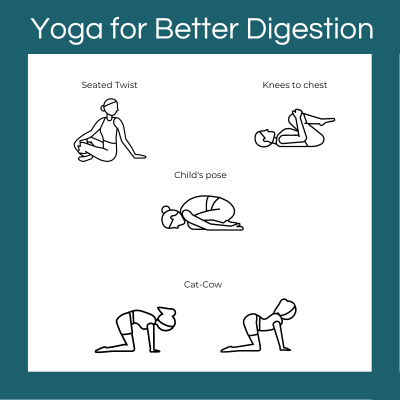TARGETED MOVEMENT EXERCISE
7 min read/ 1,112 words
Unlock the power of movement for a healthy gut! Discover how targeted movement exercise impacts digestion and gut microbiota.

Table of Contents
The Gut-Exercise Connection
When it comes to gut health, incorporating regular exercise into your routine is key. Exercise not only benefits your overall well-being but also plays a significant role in maintaining a healthy gut.
Let’s explore how targeted movement exercise affects gut health and its impact on gut microbiota.
How Targeted Movement Exercise Affects Gut Health
Regular physical activity has been linked to numerous benefits for gut health.
Research suggests that exercise can increase the diversity of bacteria in the gut, potentially enhancing brain function and reducing anxiety and depression. A healthy gut microbiota, which refers to the community of microorganisms living in your gut, has been associated with lower rates of various health issues, including inflammatory bowel disease, irritable bowel syndrome, asthma, obesity, type 2 diabetes, and rheumatoid arthritis (Abbott Nutrition).
Consuming fiber-rich foods like fruits, vegetables, and beans helps the gut microbiota produce short-chain fatty acids (SCFAs), associated with health benefits such as heart health, blood sugar control, weight loss, and maintenance.
By incorporating exercise into your routine, you can promote a healthier gut environment and support the production of beneficial SCFAs.
Impact of Exercise on Gut Microbiota
The interplay between gut microbiota, diet, exercise, and beneficial bacteria in the gut impacts overall health and may have implications for athletic performance and disease prevention.
Engaging in moderate to high-intensity exercise for 30-90 minutes at least three times per week for eight weeks is likely to produce changes in the gut microbiota in both healthy individuals and clinical populations (NCBI). These changes can contribute to an improved gut environment, potentially leading to better digestion, nutrient absorption, and overall gut health.
Incorporating regular exercise into your lifestyle can positively impact your gut health.
Aim for a combination of cardiovascular exercises like running, cycling, or swimming and strength training exercises. Remember to start slowly if you are new to exercise and gradually increase the intensity and duration over time.
It’s important to find activities that you enjoy and can sustain in the long term.
Movement and Digestion
When it comes to promoting gut health, incorporating regular physical activity into your routine can play a vital role. Exercise offers numerous benefits for digestion and overall well-being.
Benefits of Physical Activity for Digestion
Engaging in regular exercise has been shown to have positive effects on digestion.
Physical activity helps stimulate the muscles in your digestive system, promoting more efficient food movement through your gastrointestinal tract. This can help prevent issues such as constipation and bloating.
Exercise also increases blood flow to your organs, including your digestive organs. This enhanced blood circulation supports the delivery of oxygen and nutrients to these organs, optimizing their function. Improved blood flow can also aid in the removal of waste products from your digestive system.
Additionally, exercise can help reduce stress, which negatively affects digestion.
By engaging in physical activity, you can lower stress levels and potentially alleviate symptoms of gastrointestinal disorders, such as irritable bowel syndrome (IBS) or inflammatory bowel disease (IBD).
Best Types of Exercise for Gut Health
While any form of physical activity can benefit your overall health, a specifically targeted movement exercise may have specific advantages for your gut health.
Here are some types of exercises to consider:
- Aerobic Exercise
- Yoga
- Strength Training
Remember, it’s important to choose activities that you enjoy and fit your fitness level. Gradually increase the intensity and duration of your workouts to avoid overexertion.
Consult your healthcare provider before starting a new exercise regimen if you have any specific concerns or medical conditions.
Aerobic Exercise
Cardio can help increase blood flow to the digestive organs, aiding nutrient absorption and improving motility to prevent constipation.
Activities such as brisk walking, jogging, cycling, or swimming can raise your heart rate, increasing blood flow to your digestive system. Aim for at least 150 minutes of moderate-intensity aerobic exercise per week or 75 minutes of vigorous-intensity exercise.
Remember to start slowly if you are new to exercise; overdoing it won’t do you any favors.
Try a variety of activities like the ones listed above to see which ones you like and feel you can sustain in the long term. Opt for interval training to prevent boredom and increase intensity without putting too much strain on your body. For example, alternate between jogging and walking.
Yoga
Yoga combines gentle movements, stretching, and deep breathing, promoting relaxation and stress reduction. Certain yoga poses are beneficial for digestion, such as twisting poses that stimulate the abdominal area and help massage the digestive organs.
Here are a few poses to consider:
- Child’s Pose (Balasana): This gentle resting pose helps to relax the body and mind while gently compressing the abdomen, which can help relieve bloating and discomfort.
- Seated Spinal Twist (Ardha Matsyendrasana): This twisting pose helps stimulate the digestive system, improving digestion and relieving constipation.
- Cat-Cow Pose (Marjaryasana-Bitilasana): This dynamic sequence of poses involves arching and rounding the spine, which helps stretch and contract the abdominal area, promoting healthy digestion and relieving bloating.
- Knees to Chest (Apanasana): This pose helps relieve digestive air, indigestion, bloating, trapped gas, and constipation, which can enhance digestion.

Strength Training
Incorporating resistance training into your exercise routine can help improve overall muscle tone and strength, including the muscles in your abdomen. Strong core muscles can support better posture and contribute to more efficient digestion.
Sit-ups are an example of a targeted movement exercise that focuses on your core. Other strength training exercises include abdominal twists, crunches, leg lifts, and squats. *Pro tip: Yoga is also great for strengthening your core.
Try to include strength training exercises in your workout 3-4 times a week.
Incorporating regular physical activity, yoga, and strength training into your lifestyle can support your digestive system and enhance overall gut health. Remember to combine movement with other important factors like nutrition, hydration, sleep, and stress management for a comprehensive approach to gut health and overall well-being.
Did you know?
We offer a comprehensive gut health bundle that hits all five factors for one low cost. It’s our Focus on Five Bundle; you can learn more about it here. (Be sure to scroll down the page to see all five products included in the bundle.)
The bundle includes:
- 5 Ingredient Recipes for Gut Health – for gut-friendly nutrition
- Mindful Breathing Guide – to reduce stress
- Ultimate Sleep Guide w/Journal – to help get quality sleep
- 7-Day Hydration Challenge – up your water intake
- Mix & Match Workout Builder – targeted movement exercise that hits all three areas
Why wait? Grab your bundle today for only $76 ($90 value, save $14!).






